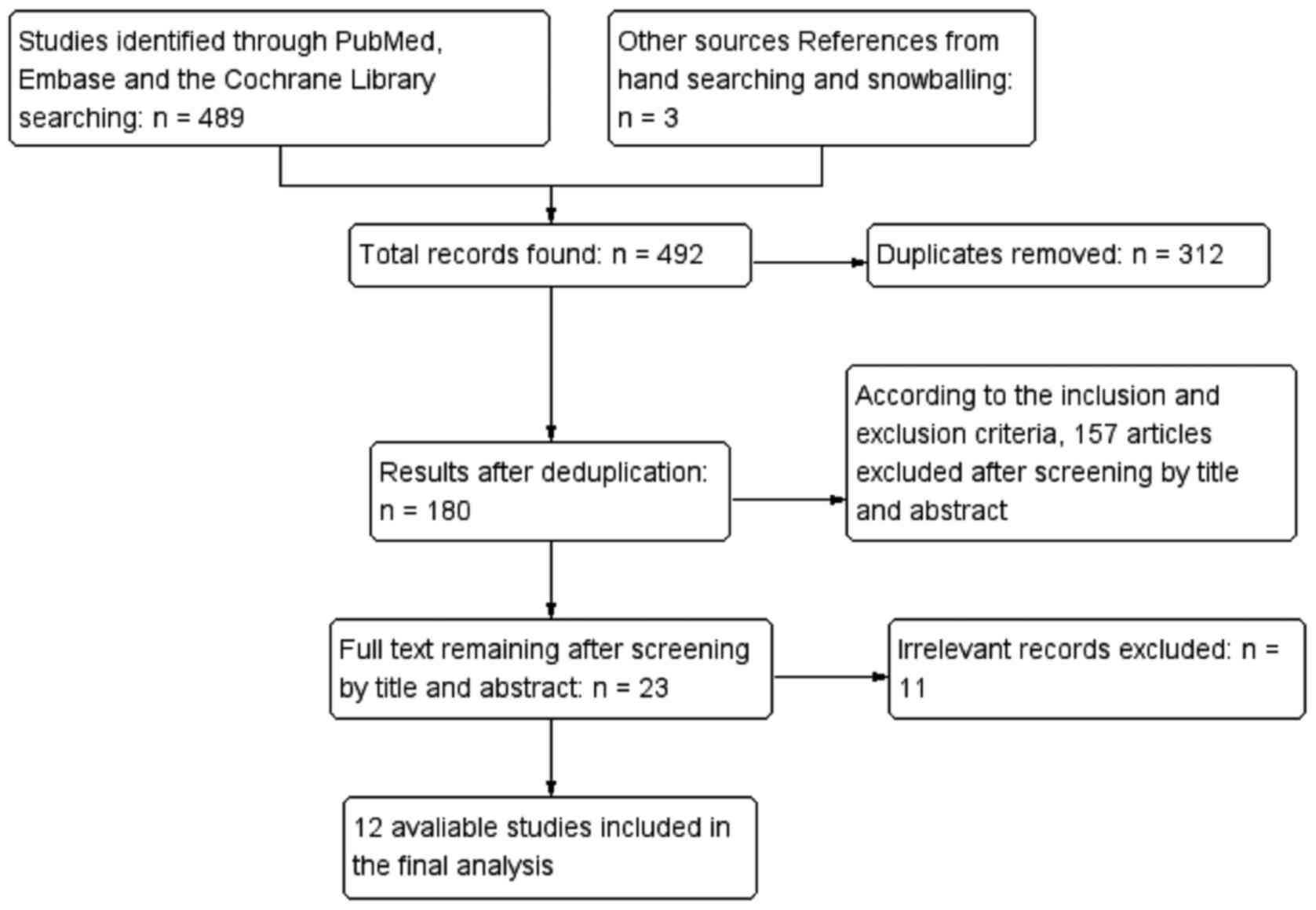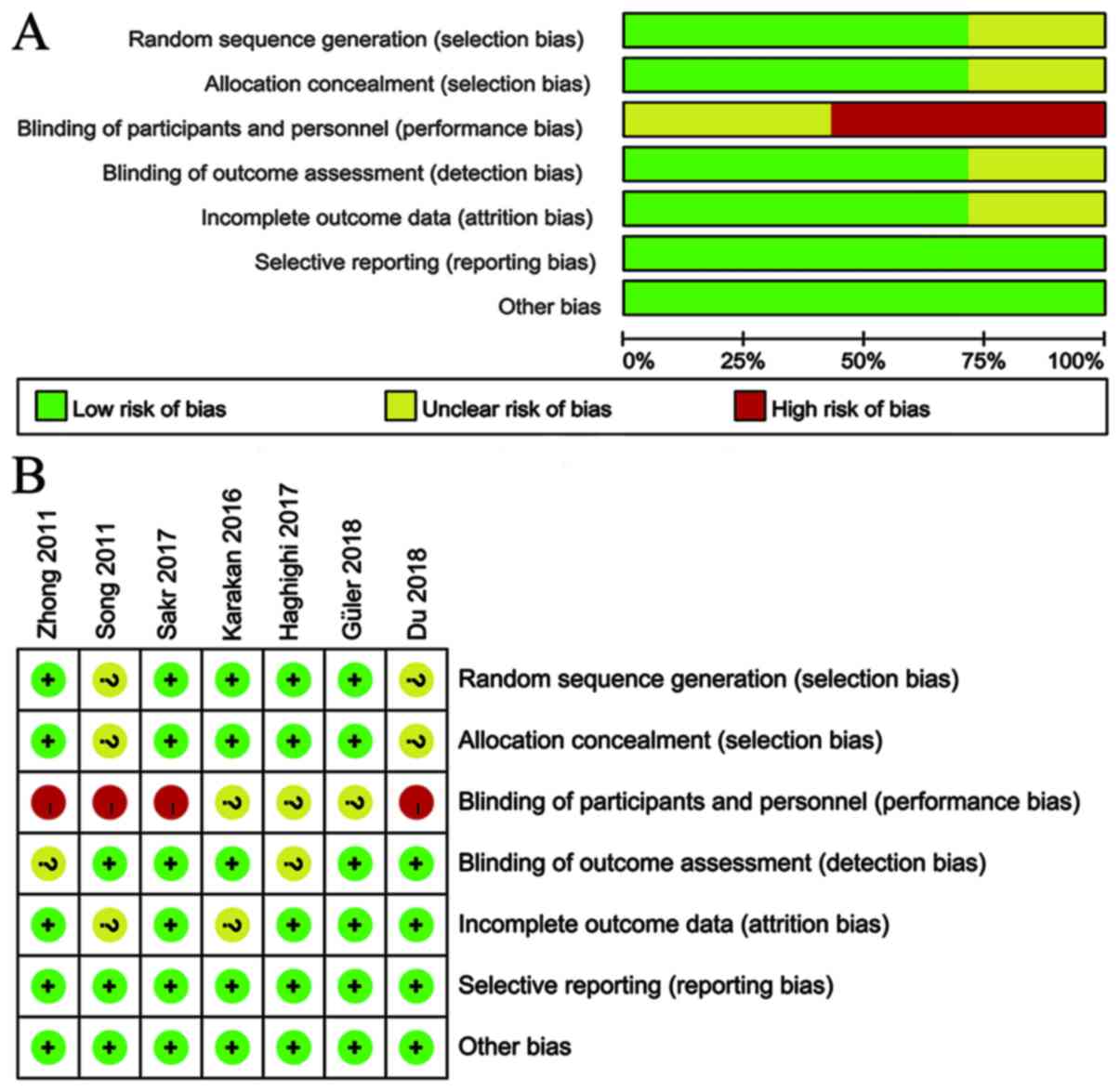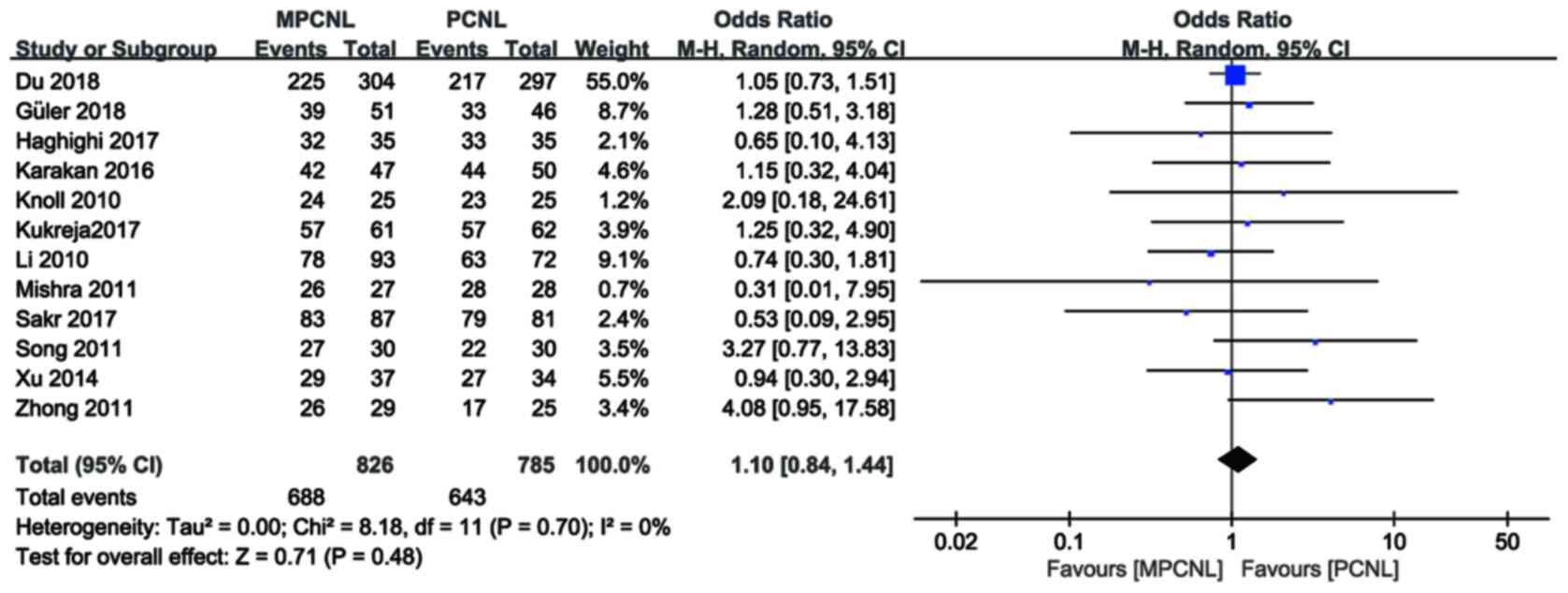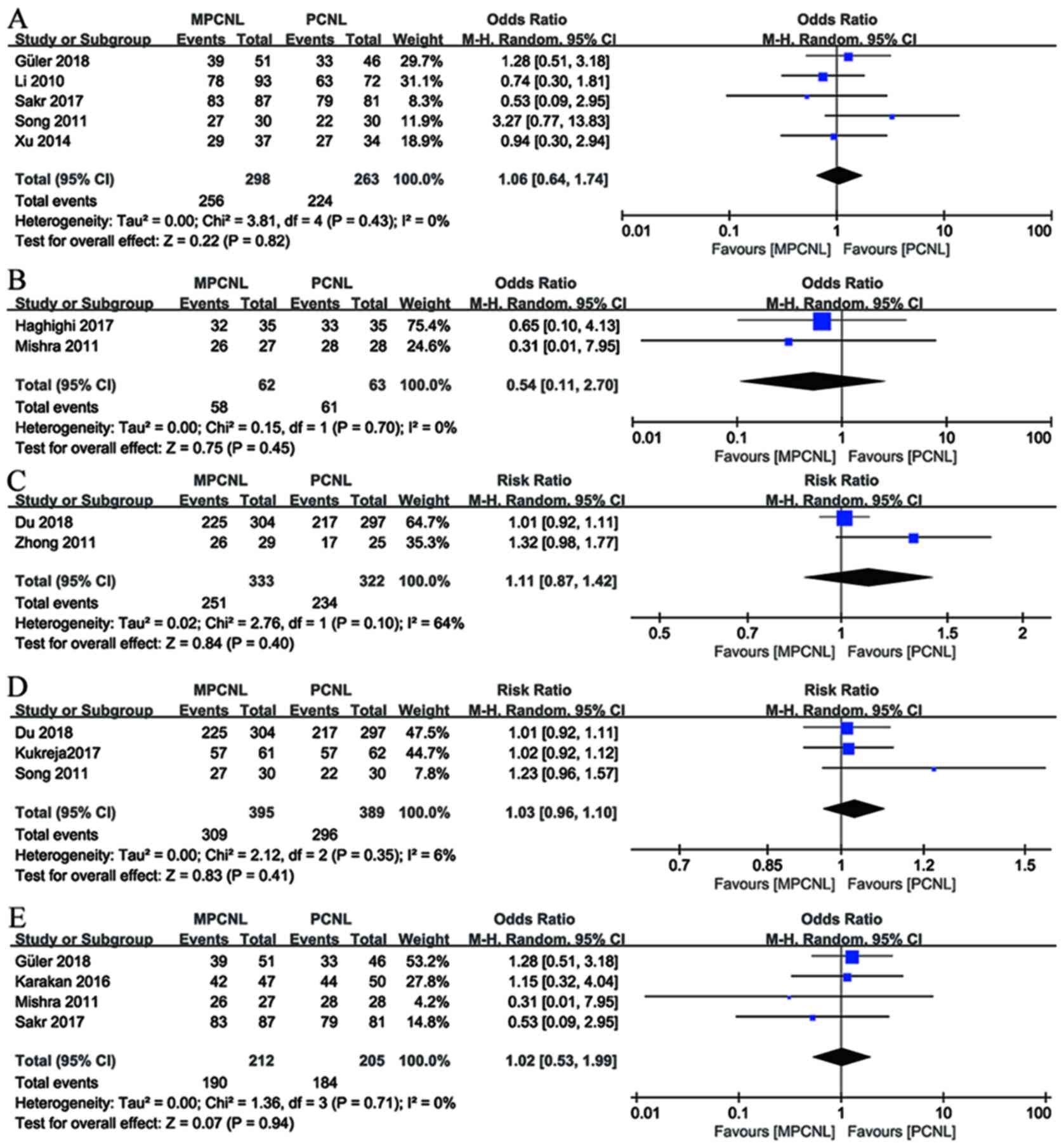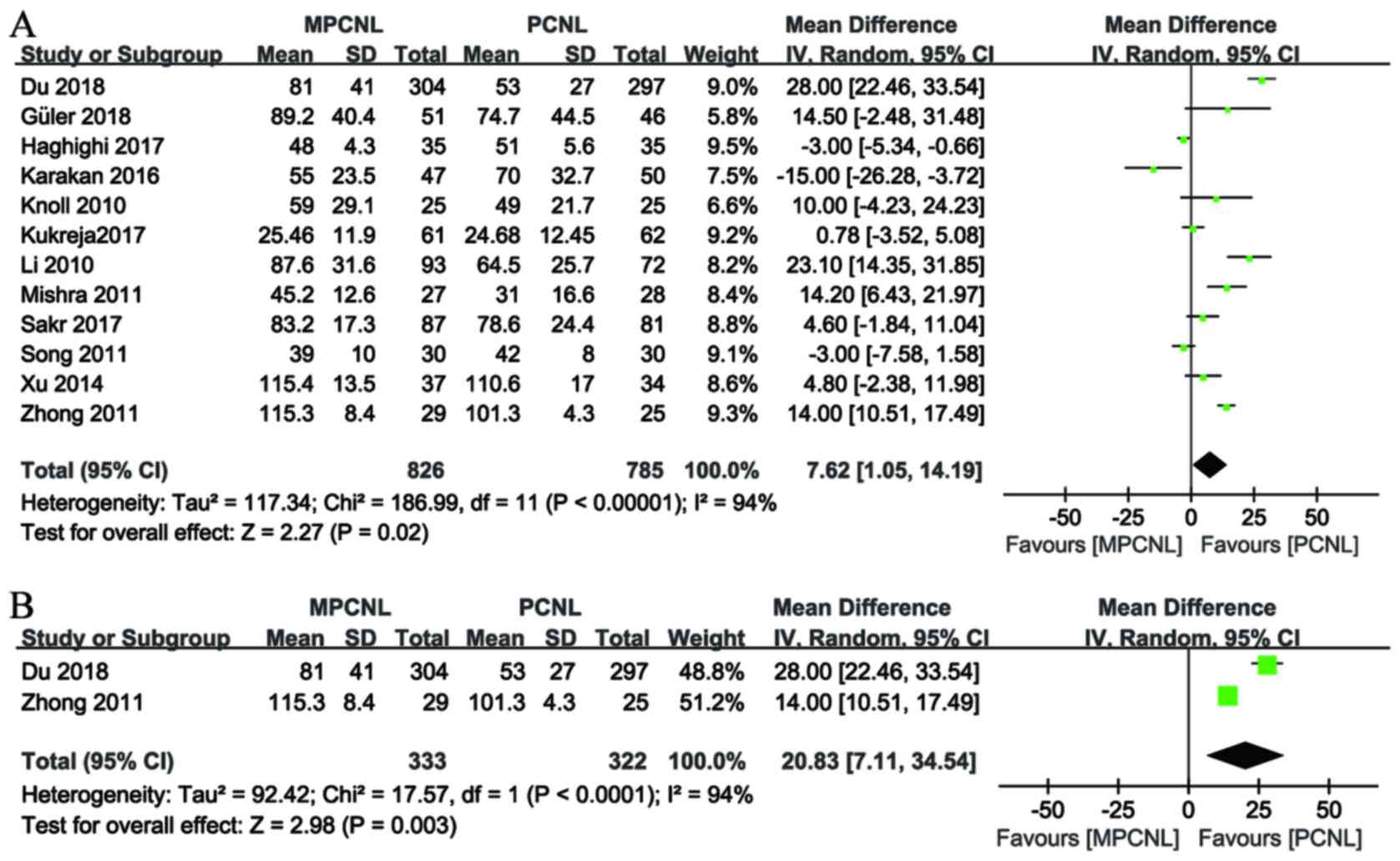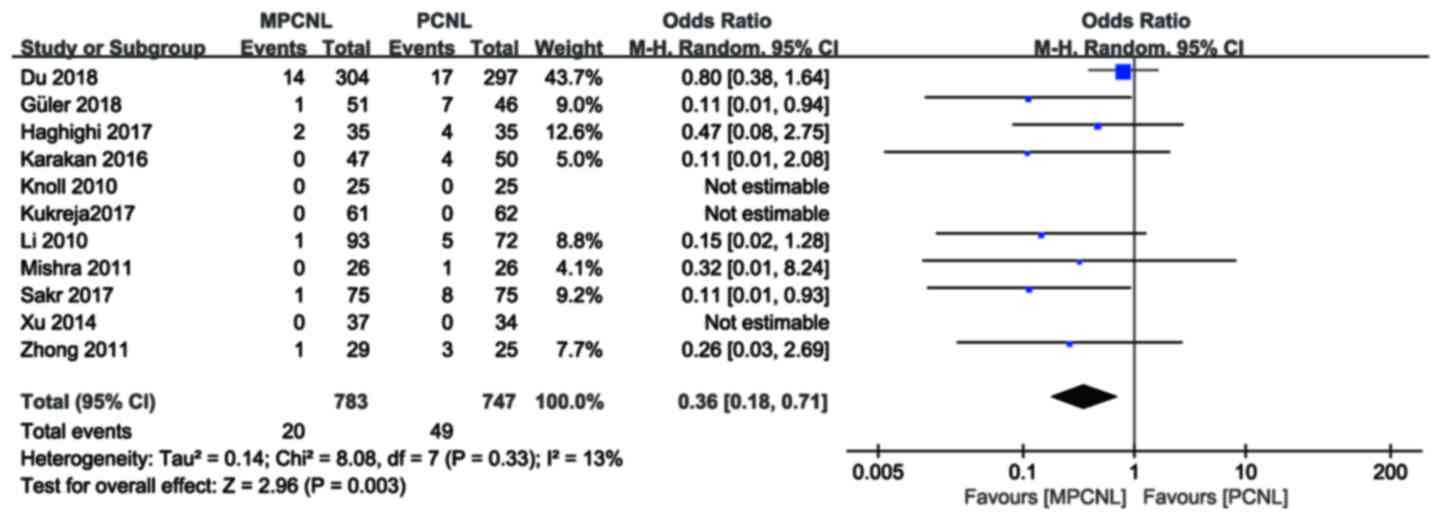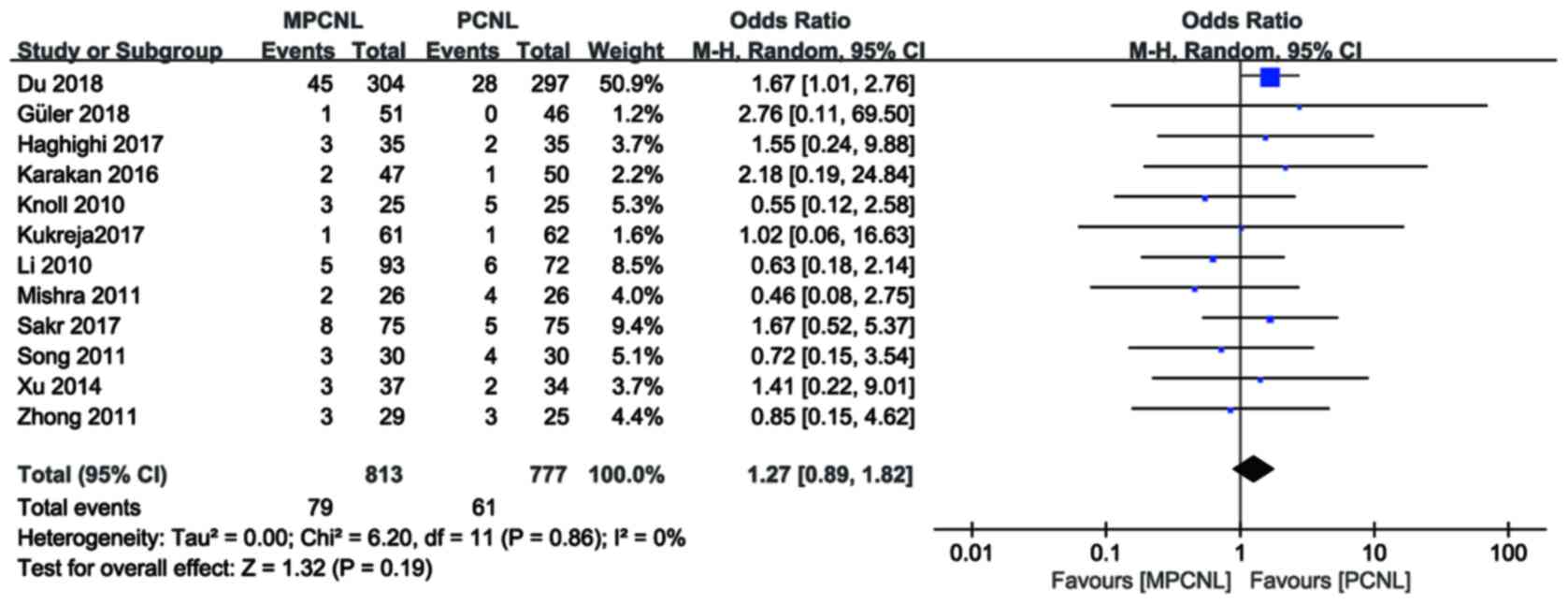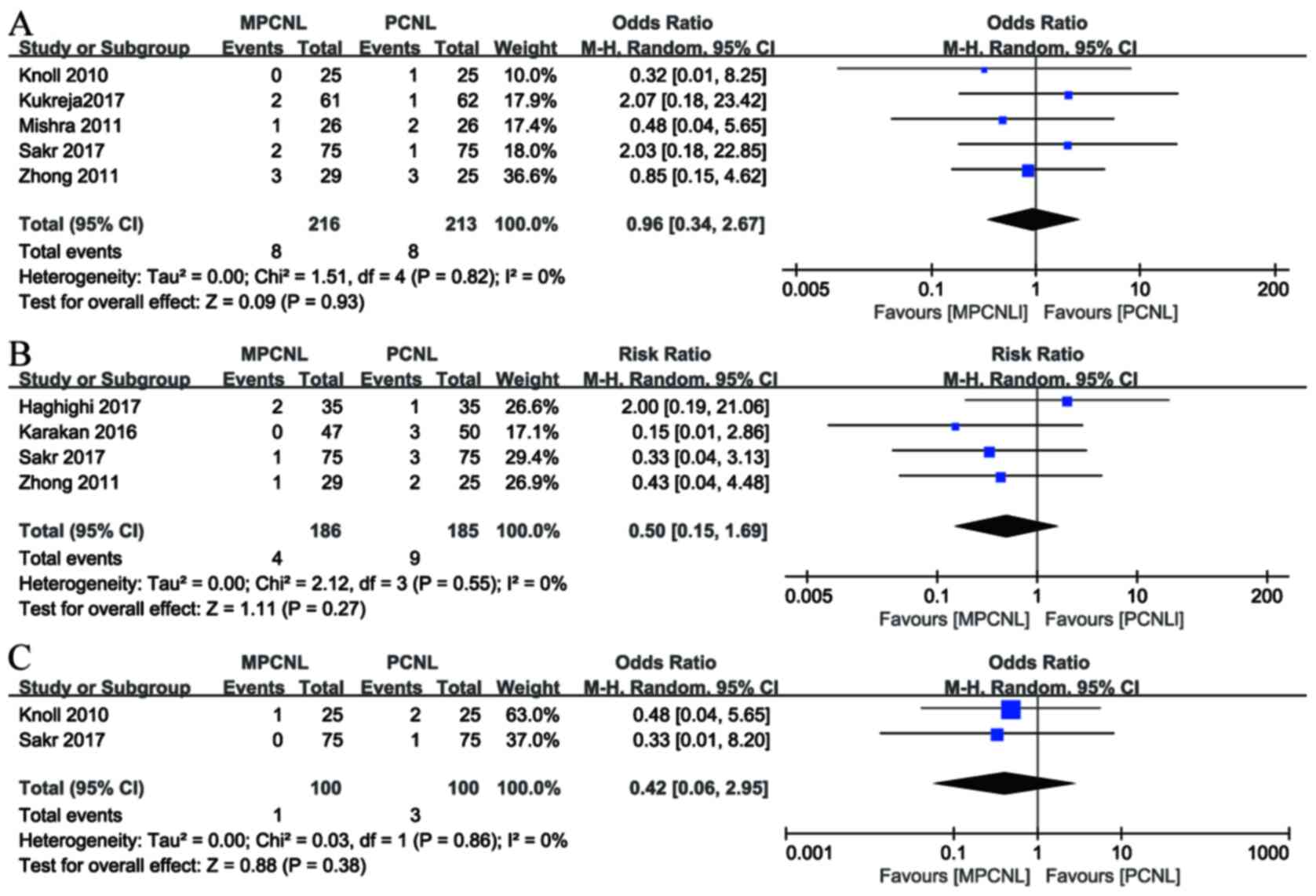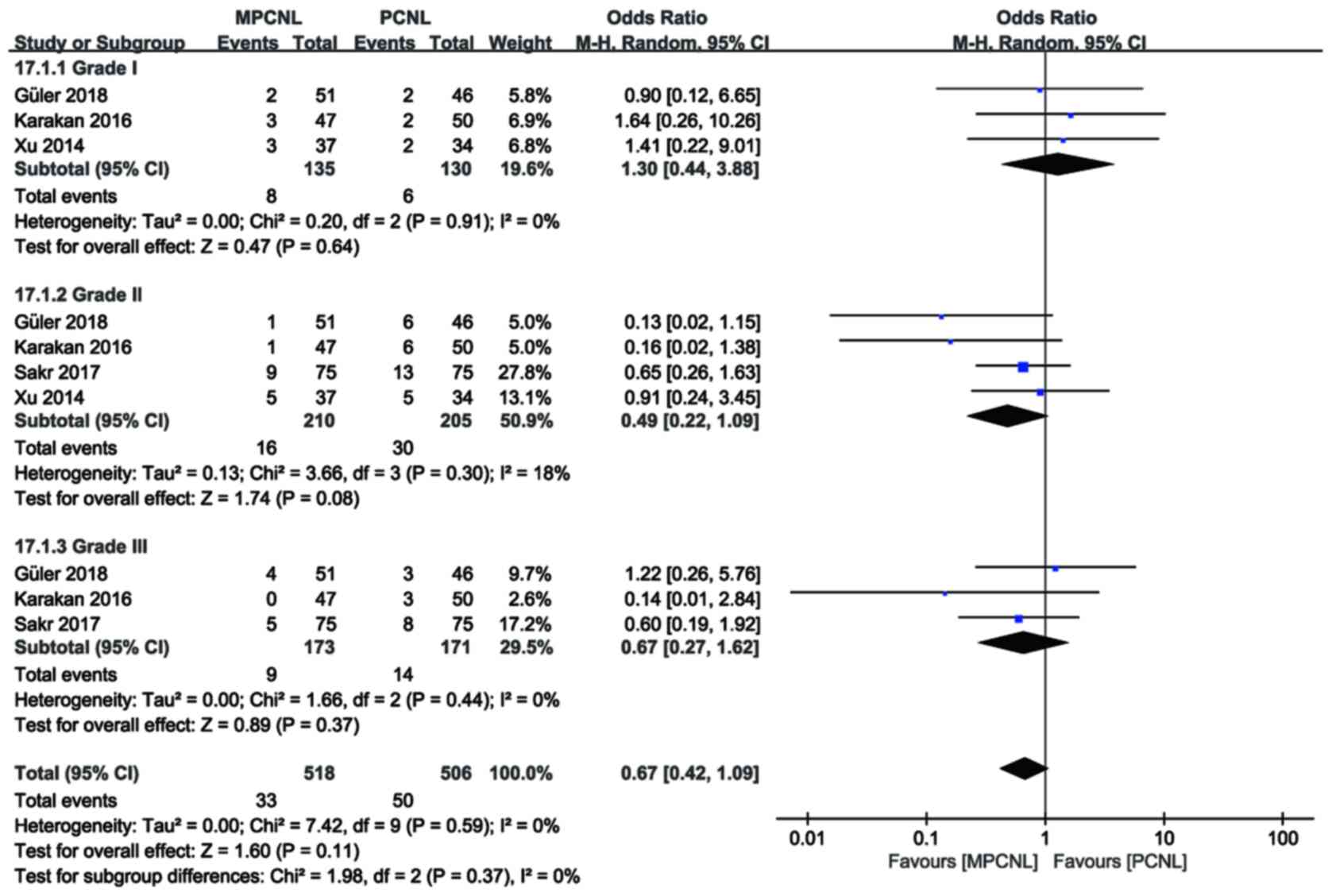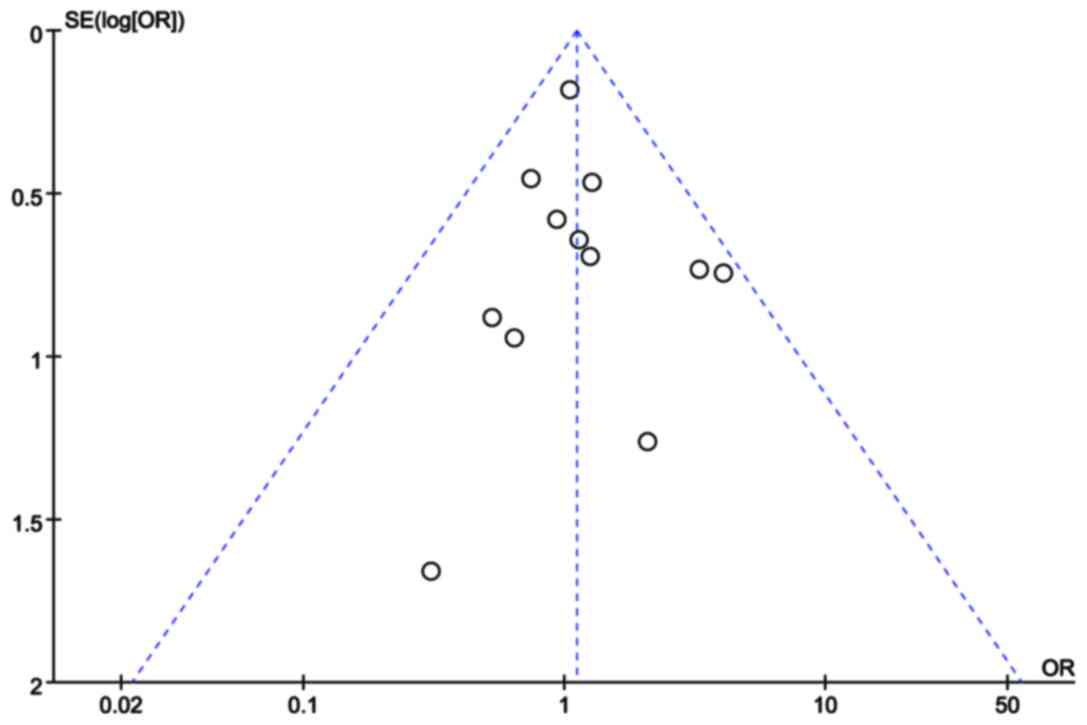|
1
|
Dwyer ME, Krambeck AE, Bergstralh EJ,
Milliner DS, Lieske JC and Rule AD: Temporal trends in incidence of
kidney stones among children: A 25-year population based study. J
Urol. 188:247–252. 2012.PubMed/NCBI View Article : Google Scholar
|
|
2
|
Marickar YM and Vijay A: Female stone
disease: The changing trend. Urol Res. 37:337–340. 2009.PubMed/NCBI View Article : Google Scholar
|
|
3
|
Turk C, Knoll T, Petrik A, Sarica K,
Skolarikos A, Straub M and Seitz C: Guidelines on urolithiasis.
European Association of Urology, 2015 http://uroweb.org/wp-content/uploads/22-Urolithiasis_LR_full.pdf.
|
|
4
|
De la Rosette JJ, Opondo D, Daels FP,
Giusti G, Serrano A, Kandasami SV, Wolf JS Jr, Grabe M and Gravas
S: CROES PCNL Study Group. Categorisation of complications and
validation of the Clavien score for percutaneous nephrolithotomy.
Eur Urol. 62:246–255. 2012.PubMed/NCBI View Article : Google Scholar
|
|
5
|
Cicekbilek I, Resorlu B, Oguz U, Kara C
and Unsal A: Effect of percutaneous nephrolithotomy on renal
functions in children: Assessment by quantitative SPECT of (99
m)Tc-DMSA uptake by the kidneys. Ren Fail. 37:1118–1121.
2015.PubMed/NCBI View Article : Google Scholar
|
|
6
|
Karatag T, Tepeler A, Silay MS, Bodakci
MN, Buldu I, Daggulli M, Hatipoglu NK, Istanbulluoglu MO and
Armagan A: A comparison of 2 percutaneous nephrolithotomy
techniques for the treatment of pediatric kidney stones of sizes
10-20 mm: Microperc vs Miniperc. Urology. 85:1015–1018.
2015.PubMed/NCBI View Article : Google Scholar
|
|
7
|
Jackman SV, Hedican SP, Peters CA and
Docimo SG: Percutaneous nephrolithotomy in infants and preschool
age children: Experience with a new technique. Urology. 52:697–701.
1998.PubMed/NCBI View Article : Google Scholar
|
|
8
|
Lahme S, Bichler KH, Strohmaier WL and
Götz T: Minimally invasive PCNL in patients with renal pelvic and
calyceal stones. Eur Urol. 40:619–624. 2001.PubMed/NCBI View Article : Google Scholar
|
|
9
|
Zeng G, Zhu W and Lam W: Miniaturised
percutaneous nephrolithotomy: Its role in the treatment of
urolithiasis and our experience. Asian J Urol. 5:295–302.
2018.PubMed/NCBI View Article : Google Scholar
|
|
10
|
Hennessey DB, Kinnear NK, Troy A, Angus D,
Bolton DM and Webb DR: Mini PCNL for renal calculi: Does size
matter. BJU Int. 119 (Suppl 5):S39–S46. 2017.PubMed/NCBI View Article : Google Scholar
|
|
11
|
Abdelhafez MF, Wendt-Nordahl G, Kruck S,
Mager R, Stenzl A, Knoll T and Schilling D: Minimally invasive
versus conventional large-bore percutaneous nephrolithotomy in the
treatment of large-sized renal calculi: Surgeon's preference. Scand
J Urol. 50:212–215. 2016.PubMed/NCBI View Article : Google Scholar
|
|
12
|
Xu S, Shi H, Zhu J, Wang Y, Cao Y, Li K,
Wang Y, Sun Z and Xia S: A prospective comparative study of
haemodynamic, electrolyte, and metabolic changes during
percutaneous nephrolithotomy and minimally invasive percutaneous
nephrolithotomy. World J Urol. 32:1275–1280. 2014.PubMed/NCBI View Article : Google Scholar
|
|
13
|
Giusti G, Piccinelli A, Taverna G, Benetti
A, Pasini L, Corinti M, Teppa A, Zandegiacomo de Zorzi S and
Graziotti P: Miniperc? No, thank you. Eur Urol. 51:810–815.
2007.PubMed/NCBI View Article : Google Scholar
|
|
14
|
Moher D, Liberati A, Tetzlaff J and Altman
DG: PRISMA Group. Preferred reporting items for systematic reviews
and meta-analyses: The PRISMA statement. PLoS Med.
6(e1000097)2009.PubMed/NCBI View Article : Google Scholar
|
|
15
|
Shea BJ, Reeves BC, Wells G, Thuku M,
Hamel C, Moran J, Moher D, Tugwell P, Welch V, Kristjansson E and
Henry DA: AMSTAR 2: A critical appraisal tool for systematic
reviews that include randomised or non-randomised studies of
healthcare interventions, or both. BMJ. 358(j4008)2017.PubMed/NCBI View Article : Google Scholar
|
|
16
|
Mostafa A, Agur W, Abdel-All M, et al:
Oxford Centre for Evidence-based Medicine-Levels of Evidence. 2009.
http://www.cebm.net/oxford-Centre-evidence-based-medicine
levels-evidencemarch-2009/. Accessed May, 2016.
|
|
17
|
Clark HD, Wells GA, Huët C, McAlister FA,
Salmi LR, Fergusson D and Laupacis A: Assessing the quality of
randomized trials: Reliability of the Jadad scale. Control Clin
Trials. 20:448–452. 1999.PubMed/NCBI View Article : Google Scholar
|
|
18
|
Wells GA, Shea B, O'Connell Robertson J,
Peterson J, Welch V, Losos M and Tugwell P: The Newcastle-Ottawa
Scale (NOS) for Assessing the Quality if Nonrandomized Studies in
Meta-Analyses. Ottawa Hospital Research Institute, 2015. http://www.ohri.ca/programs/clinical_epidemiology/oxford.asp.
Accessed May 2016.
|
|
19
|
Higgins JP, Altman DG, Gøtzsche PC, Jüni
P, Moher D, Oxman AD, Savovic J, Schulz KF, Weeks L, Sterne JA, et
al: The Cochrane collaboration's tool for assessing risk of bias in
randomised trials. BMJ. 343(d5928)2011.PubMed/NCBI View Article : Google Scholar
|
|
20
|
Du C, Song L, Wu X, Fan D, Zhu L, Liu S,
Deng X, Liu T, Yang Z, Peng Z, et al: Suctioning minimally invasive
percutaneous nephrolithotomy with a patented system is effective to
treat renal staghorn calculi: A prospective multicenter study. Urol
Int. 101:143–149. 2018.PubMed/NCBI View Article : Google Scholar
|
|
21
|
Güler A, Erbin A, Ucpinar B, Savun M,
Sarilar O and Akbulut MF: Comparison of miniaturized percutaneous
nephrolithotomy and standard percutaneous nephrolithotomy for the
treatment of large kidney stones: A randomized prospective study.
Urolithiasis. 47:289–295. 2019.PubMed/NCBI View Article : Google Scholar
|
|
22
|
Haghighi R, Zeraati H and Ghorban Zade M:
Ultra-mini-percutaneous nephrolithotomy (PCNL) versus standard
PCNL: A randomised clinical trial. Arab J Urol. 15:294–298.
2017.PubMed/NCBI View Article : Google Scholar
|
|
23
|
Karakan T, Kilinc MF, Doluoglu OG, Yildiz
Y, Yuceturk CN, Bagcioglu M, Karagöz MA, Bas O and Resorlu B: The
modified ultra-mini percutaneous nephrolithotomy technique and
comparison with standard nephrolithotomy: A randomized prospective
study. Urolithiasis. 45:209–213. 2017.PubMed/NCBI View Article : Google Scholar
|
|
24
|
Knoll T, Wezel F, Michel MS, Honeck P and
Wendt-Nordahl G: Do patients benefit from miniaturized tubeless
percutaneous nephrolithotomy? A comparative prospective study. J
Endourol. 24:1075–1079. 2010.PubMed/NCBI View Article : Google Scholar
|
|
25
|
Kukreja RA: Should mini percutaneous
nephrolithotomy (MiniPNL/Miniperc) be the ideal tract for
medium-sized renal calculi (15-30 mm)? World J Urol. 36:285–291.
2018.PubMed/NCBI View Article : Google Scholar
|
|
26
|
Li LY, Gao X, Yang M, Li JF, Zhang HB, Xu
WF and Lin Z: Does a smaller tract in percutaneous nephrolithotomy
contribute to less invasiveness? A prospective comparative study.
Urology. 75:56–61. 2010.PubMed/NCBI View Article : Google Scholar
|
|
27
|
Mishra S, Sharma R, Garg C, Kurien A,
Sabnis R and Desai M: Prospective comparative study of miniperc and
standard PNL for treatment of 1 to 2 cm size renal stone. BJU Int.
108:896–900. 2011.PubMed/NCBI View Article : Google Scholar
|
|
28
|
Sakr A, Salem E, Kamel M, Desoky E, Ragab
A, Omran M, Fawzi A and Shahin A: Minimally invasive percutaneous
nephrolithotomy vs standard PCNL for management of renal stones in
the flank-free modified supine position: Single-center experience.
Urolithiasis. 45:585–589. 2017.PubMed/NCBI View Article : Google Scholar
|
|
29
|
Song L, Chen Z, Liu T, Zhong J, Qin W, Guo
S, Peng Z, Hu M, Du C, Zhu L, et al: The application of a patented
system to minimally invasive percutaneous nephrolithotomy. J
Endourol. 25:1281–1286. 2011.PubMed/NCBI View Article : Google Scholar
|
|
30
|
Zhong W, Zeng G, Wu W, Chen W and Wu K:
Minimally invasive percutaneous nephrolithotomy with multiple mini
tracts in a single session in treating staghorn calculi. Urol Res.
39:117–122. 2011.PubMed/NCBI View Article : Google Scholar
|
|
31
|
Hozo SP, Djulbegovic B and Hozo I:
Estimating the mean and variance from the median, range, and the
size of a sample. BMC Med Res Methodol. 5(13)2005.PubMed/NCBI View Article : Google Scholar
|
|
32
|
Tefekli A, Ali Karadag M, Tepeler K, Sari
E, Berberoglu Y, Baykal M, Sarilar O and Muslumanoglu AY:
Classification of percutaneous nephrolithotomy complications using
the modified Clavien grading system: Looking for a standard. Eur
Urol. 53:184–190. 2008.PubMed/NCBI View Article : Google Scholar
|
|
33
|
Moe OW: Kidney stones: Pathophysiology and
medical management. Lancet. 367:333–344. 2006.PubMed/NCBI View Article : Google Scholar
|
|
34
|
Assimos D, Krambeck A, Miller NL, Monga M,
Murad MH, Nelson CP, Pace KT, Pais VM Jr, Pearle MS, Preminger GM,
et al: Surgical management of stones: American Urological
Association/Endourological Society Guideline, PART II. J Urol.
196:1161–1169. 2016.PubMed/NCBI View Article : Google Scholar
|
|
35
|
De la Rosette J, Assimos D, Desai M,
Gutierrez J, Lingeman J, Scarpa R and Tefekli A: CROES PCNL Study
Group. The clinical research office of the endourological society
percutaneous nephrolithotomy global study: Indications,
complications, and outcomes in 5803 patients. J Endourol. 25:11–17.
2011.PubMed/NCBI View Article : Google Scholar
|
|
36
|
Kirac M, Bozkurt ÖF, Tunc L, Guneri C,
Unsal A and Biri H: Comparison of retrograde intrarenal surgery and
mini-percutaneous nephrolithotomy in management of lower-pole renal
stones with a diameter of smaller than 15 mm. Urolithiasis.
41:241–246. 2013.PubMed/NCBI View Article : Google Scholar
|
|
37
|
Sabnis RB, Ganesamoni R and Sarpal R:
Miniperc: What is its current status? Curr Opin Urol. 22:129–133.
2012.PubMed/NCBI View Article : Google Scholar
|
|
38
|
Desai MR, Sharma R, Mishra S, Sabnis RB,
Stief C and Bader M: Single-step percutaneous nephrolithotomy
(microperc): The initial clinical report. J Urol. 186:140–145.
2011.PubMed/NCBI View Article : Google Scholar
|
|
39
|
De S, Autorino R, Kim FJ, Zargar H,
Laydner H, Balsamo R, Torricelli FC, Di Palma C, Molina WR, Monga M
and De Sio M: Percutaneous nephrolithotomy versus retrograde
intrarenal surgery: A systematic review and meta-analysis. Eur
Urol. 67:125–137. 2015.PubMed/NCBI View Article : Google Scholar
|
|
40
|
Zhu W, Liu Y, Liu L, Lei M, Yuan J, Wan SP
and Zeng G: Minimally invasive versus standard percutaneous
nephrolithotomy: A meta-analysis. Urolithiasis. 43:563–570.
2015.PubMed/NCBI View Article : Google Scholar
|
|
41
|
Mahmood SN, Aziz BO, Tawfeeq HM and
Fakhralddin SS: Mini-versus standard percutaneous nephrolithotomy
for treatment of pediatric renal stones: Is smaller enough. J
Pediatr Urol. 15:664.e1–664.e6. 2019.PubMed/NCBI View Article : Google Scholar
|
|
42
|
Wu C, Hua LX, Zhang JZ, Zhou XR, Zhong W
and Ni HD: Comparison of renal pelvic pressure and postoperative
fever incidence between standard- and mini-tract percutaneous
nephrolithotomy. Kaohsiung J Med Sci. 33:36–43. 2017.PubMed/NCBI View Article : Google Scholar
|
|
43
|
Davis NF, Quinlan MR, Poyet C,
Lawrentschuk N, Bolton DM, Webb D and Jack GS: Miniaturised
percutaneous nephrolithotomy versus flexible ureteropyeloscopy: A
systematic review and meta-analysis comparing clinical efficacy and
safety profile. World J Urol. 36:1127–1138. 2018.PubMed/NCBI View Article : Google Scholar
|
|
44
|
Somani BK, Desai M, Traxer O and Lahme S:
Stone-free rate (SFR): A new proposal for defining levels of SFR.
Urolithiasis. 42(95)2014.PubMed/NCBI View Article : Google Scholar
|
|
45
|
Danilovic A, Cavalanti A, Rocha BA, Traxer
O, Torricelli FCM, Marchini GS, Mazzucchi E and Srougi M:
Assessment of residual stone fragments after retrograde intrarenal
surgery. J Endourol. 32:1108–1113. 2018.PubMed/NCBI View Article : Google Scholar
|
|
46
|
Manohar T, Ganpule AP, Shrivastav P and
Desai M: Percutaneous nephrolithotomy for complex caliceal calculi
and staghorn stones in children less than 5 years of age. J
Endourol. 20:547–551. 2006.PubMed/NCBI View Article : Google Scholar
|
|
47
|
Cho HJ, Lee JY, Kim SW, Hwang TK and Hong
SH: Percutaneous nephrolithotomy for complex renal calculi: Is
multi-tract approach ok? Can J Urol. 19:6360–6365. 2012.PubMed/NCBI
|
|
48
|
Chen S, Zhou L, Wei T, Luo D, Jin T, Li H
and Wang K: Comparison of holmium: YAG laser and pneumatic
lithotripsy in the treatment of ureteral stones: An update
meta-analysis. Urol Int. 98:125–133. 2017.PubMed/NCBI View Article : Google Scholar
|
|
49
|
Hofmann R, Weber J, Heidenreich A, Varga Z
and Olbert P: Experimental studies and first clinical experience
with a new Lithoclast and ultrasound combination for lithotripsy.
Eur Urol. 42:376–381. 2002.PubMed/NCBI View Article : Google Scholar
|
|
50
|
Kuo RL, Paterson RF, Siqueira TM Jr, Evan
AP, McAteer JA, Williams JC Jr and Lingeman JE: In vitro assessment
of lithoclast ultra intracorporeal lithotripter. J Endourol.
18:153–156. 2004.PubMed/NCBI View Article : Google Scholar
|
|
51
|
Ergin G, Kirac M, Kopru B, Ebiloglu T and
Biri H: Flexible ureterorenoscopy versus mini-percutaneous
nephrolithotomy for the treatment of renal stones. Urol J.
15:313–317. 2018.PubMed/NCBI View Article : Google Scholar
|
|
52
|
ElSheemy MS, Elmarakbi AA, Hytham M,
Ibrahim H, Khadgi S and Al-Kandari AM: Mini vs standard
percutaneous nephrolithotomy for renal stones: A comparative study.
Urolithiasis. 47:207–214. 2019.PubMed/NCBI View Article : Google Scholar
|
|
53
|
Akman T, Sari E, Binbay M, Yuruk E,
Tepeler A, Kaba M, Muslumanoglu AY and Tefekli A: Comparison of
outcomes after percutaneous nephrolithotomy of staghorn calculi in
those with single and multiple accesses. J Endourol. 24:955–960.
2010.PubMed/NCBI View Article : Google Scholar
|
|
54
|
Preminger GM, Assimos DG, Lingeman JE,
Nakada SY, Pearle MS and Wolf JS Jr: AUA Nephrolithiasis Guideline
Panel. Chapter 1: AUA guideline on management of staghorn calculi:
Diagnosis and treatment recommendations. J Urol. 173:1991–2000.
2005.PubMed/NCBI View Article : Google Scholar
|
|
55
|
Tokas T, Herrmann TRW, Skolarikos A and
Nagele U: Training and Research in Urological Surgery and
Technology (T.R.U.S.T.)-Group. Pressure matters: Intrarenal
pressures during normal and pathological conditions, and impact of
increased values to renal physiology. World J Urol. 37:125–131.
2019.PubMed/NCBI View Article : Google Scholar
|
|
56
|
Yamaguchi A, Skolarikos A, Buchholz NP,
Chomón GB, Grasso M, Saba P, Nakada S and de la Rosette J: Clinical
Research Office Of The Endourological Society Percutaneous
Nephrolithotomy Study Group. Operating times and bleeding
complications in percutaneous nephrolithotomy: A comparison of
tract dilation methods in 5,537 patients in the clinical research
office of the Endourological society percutaneous Nephrolithotomy
global study. J Endourol. 25:933–939. 2011.PubMed/NCBI View Article : Google Scholar
|
|
57
|
Kukreja R and Desai M, Patel S, Bapat S
and Desai M: Factors affecting blood loss during percutaneous
nephrolithotomy: Prospective study. J Endourol. 18:715–722.
2004.PubMed/NCBI View Article : Google Scholar
|
|
58
|
Nouralizadeh A, Ziaee SA, Hosseini Sharifi
SH, Basiri A, Tabibi A, Sharifiaghdas F, Zaki H, Nikkar MM, Lashay
A, Ahanian A and Soltani MH: Delayed postpercutaneous
nephrolithotomy hemorrhage: Prevalence, predictive factors and
management. Scand J Urol. 48:110–115. 2014.PubMed/NCBI View Article : Google Scholar
|
|
59
|
Gao XS, Liao BH, Chen YT, Feng SJ, Gao R,
Luo DY, Liu JM and Wang KJ: Different tract sizes of miniaturized
percutaneous nephrolithotomy versus retrograde intrarenal surgery:
A systematic review and meta-analysis. J Endourol. 31:1101–1110.
2017.PubMed/NCBI View Article : Google Scholar
|















